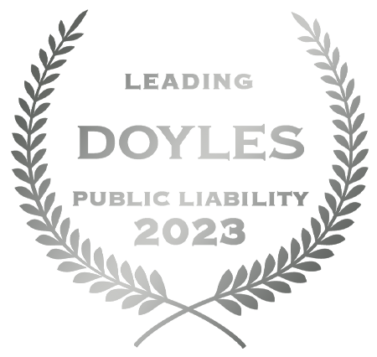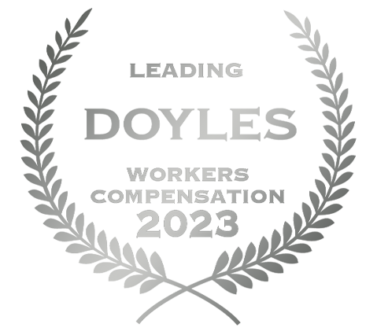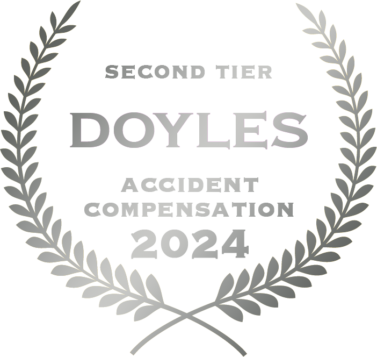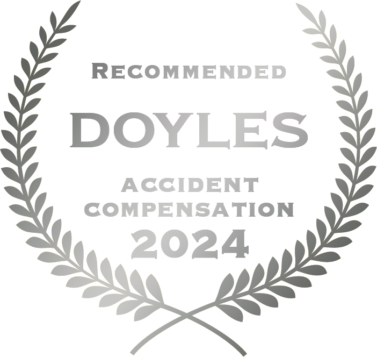
CTP Common Law Claim – How to Claim Your Lump Sum.
If you’ve been injured in a motor vehicle accident in NSW, you can claim personal injury benefits to cover your losses including lost wages, treatment, and care expenses. But if your injuries have been assessed as above-threshold and you weren’t the driver at fault, then you’re also entitled to make a CTP common law claim for a lump sum. A CTP common law claim is the only way to get support beyond 24 months after your accident, and the payments can be substantial.
Before you apply for a lump sum, take some time to understand how the claims process works, to make sure you give your application the best possible chance of success. Then, when you’re ready, follow the step-by-step guide in this article to lodge your CTP common law claim. There’s a strict time limit for lodging, so getting started early and getting help from a CTP lawyer will help make sure you don’t miss out.

CTP common law claim types.
There are two types of lump sum payments available: future income loss, and non-economic loss (sometimes known as pain and suffering).
| Lump sum payment | Description |
|---|---|
| Future income loss | Covers your loss of earnings or reduced ability to earn income due to your injuries right up until the date of retirement. For example: if you can only work 20 hours a week because of your injuries, and you used to work 40 hours, your lump sum could include an amount to cover 20 hours a week in lost earnings for the rest of your working life. |
| Non-economic loss | Covers your reduced quality of life. Only a person with a whole person impairment of more than 10% can claim pain and suffering as well as income loss. |
Future income loss.
A future income loss claim is for the impact your injury has had on your ability to earn in the future.
Here’s an example of how a claim could run:
- Joe was 42 when he injured his back in a car accident that wasn’t his fault.
- He had been working as a carpenter for almost 20 years.
- He had 12 weeks off work for medical treatment and rehabilitation, then could only return to light duties four days a week, because of the back pain brought on by working.
- His average earnings had been $1500 a week.
Firstly, the twelve weeks Joe had off work to attend medical treatment and rehabilitation will be paid to Joe as part of his statutory benefits claim and will be calculated based on his $1500 per week pre-accident earnings plus super.
The calculation would be: 12 weeks off x $1500 = $18,000 + 11 % superannuation = $19980 + Fox v Wood* = approximately $24,000.
Then Joe will be able to claim a further lump sum to cover the reduction in his future earnings capacity since he’s now able to work only four days per week. Based on a retirement age of 68, Joe’s future lost earnings are likely to be in excess of $220,000.
Please note that the final calculations is more complicated, indexing Joe’s earnings for inflation and also taking into account the severity of the injury. But we have used this as an example to illustrate the basis of how lost earnings are calculated.
* Fox v wood component is an allowance made for tax paid on weekly benefits.
Non-economic loss.
A non-economic loss payout is available if you’re over the 10% threshold for whole person impairment (WPI), and it’s calculated based on a fixed table that’s indexed every year. So it’s important that your WPI is assessed correctly and takes into account all of your injuries. A Law Partners specialist CTP lawyer will get to know you personally and can make the best case on your behalf about how much you’ve been impacted by your injuries.
The biggest mistake you can make is to submit your own CTP common law claim for non-economic loss and simply accept the insurer’s decision – if you do, you’ll almost certainly be a lot worse off than if you have one of our lawyers arguing your case.
To give yourself the best possible chance of success, you should talk to one of our CTP lawyers before you lodge your CTP common law claim. You can call us on 13 15 15 and get free legal advice over the phone.
Step-by-step guide to lodging a CTP common law claim.
If you’ve looked at the SIRA website or any of the insurers’ websites, you may have noticed there’s very little information on how to actually lodge a CTP common law claim for a lump sum, and virtually no information on how to increase your chances of success. We’ve taken the best tips from our CTP lawyers and summarised them into this step-by-step guide; so if you’re ready to lodge your claim you can get started by following the steps below.
1. Check your eligibility.
- If your injuries have been assessed as above-threshold and you weren’t mostly at fault in the accident, you can make a common law claim for past and future loss of income.
- If your whole person impairment (WPI) has been assessed as over 10%, then you’re entitled to claim lump sums for both income loss and non-economic loss.
SIRA has a limited list of doctors who can do a WPI assessment. However, it’s well known within the industry that some doctors are more likely to provide a lower WPI assessment than others, favouring the insurer.
Our specialist CTP lawyers can help you make sure your WPI assessment is done fairly so that you don’t miss out on compensation you’re entitled to. Chat with us online or give us a call today to find out more about this.
2. When to make your CTP common law claim.
You’re able to make a common law claim at any time after your accident.
3. How to lodge your CTP common law claim.
The application form for a CTP common law claim can be found on SIRA’s website.
You’ll see that the claim form doesn’t specify whether you’re claiming for income loss or non-economic loss – it’s simply one form that’s assessed by the insurer to determine whether you’re entitled to income loss only, or to a non-economic loss lump sum as well.
4. Getting help.
CTP common law claims are complex, and lump sum amounts can be substantial. If you’ve had your lump sum claim rejected, don’t assume that’s the end of the matter – talk to one of our specialist CTP lawyers and find out what your options are. Better still, you can call us today for free advice before you lodge your claim, and one of our specialist lawyers will assist you.
Why CTP common law claims are rejected.
There are four main reasons why your claim may be rejected:
1. You were at fault in the accident.
If you were at fault, you’re not entitled to claim a lump sum. However, in some accidents there’s not necessarily just one driver at fault – it may be determined that each driver was partially at fault. In that case, you may still be entitled to claim a lump sum, although the payment may be reduced to allow for your “contributory negligence”. Having a CTP lawyer argue your case for you will almost certainly result in a better outcome for you.
2. The insurer deemed your injuries to be threshold (minor) injuries.
If your injuries have been assessed as threshold (minor) injuries, then the insurer will use this as grounds to reject your lump sum claim. However, you may be eligible to have your injuries reassessed, and if that assessment shows that you have an above-threshold injury, then you may be eligible to claim a lump sum.
This would apply if you have:
- An above-threshold injury that was missed during the assessment
- Developed psychological injuries since the assessment
- Developed additional physical injuries since the assessment (e.g., a back problem that has developed from limping)
3. You missed the deadline for claiming.
You have three months to lodge your Application for Personal Injury Benefits form and three years to lodge your common law damages (lump sum) claim. However, you can lodge your common law damages claim at any time once your injuries are deemed above the threshold (non minor).
If you miss the deadline to lodge your claim but have a reasonable excuse, we can help you provide a late claim explanation to the insurer.
4. You claimed non-economic loss but were assessed as having <10% WPI.
To be eligible to claim non-economic loss (pain and suffering), your injuries need to have been assessed as greater than 10% WPI. So, if your assessment shows less than 10% WPI, then the only way to claim non-economic loss is to have your assessment changed. An experienced CTP lawyer can advise you on whether your injuries have been assessed correctly, and whether there’s a possibility of presenting new evidence that might change your assessment.
If your claim is rejected, it doesn’t have to be the end of the road.
When to hire a lawyer.
While you can lodge your own CTP common law claim, it’s not advised. Keep in mind that the insurer will have lawyers, medico-legal experts, and other specialists assessing your claim. Your best chance of success is having a specialist CTP lawyer on your side who can make sure you receive everything you’re entitled to.
At Law Partners we work on a no win, no fee basis, and we win over 99% of our cases. We’ll get to know you personally so we can make the strongest case on your behalf and get you the best possible outcome. If you’re not sure what lump sum payments you’re entitled to or would like to know more about how to make a CTP common law claim, get in touch with us now for free legal advice from a specialist car accident lawyer. Law Partners has specialist lawyers based in Sydney ready to help.
Related articles
Do I have a case?
Our senior lawyers will assess your case for free.


















